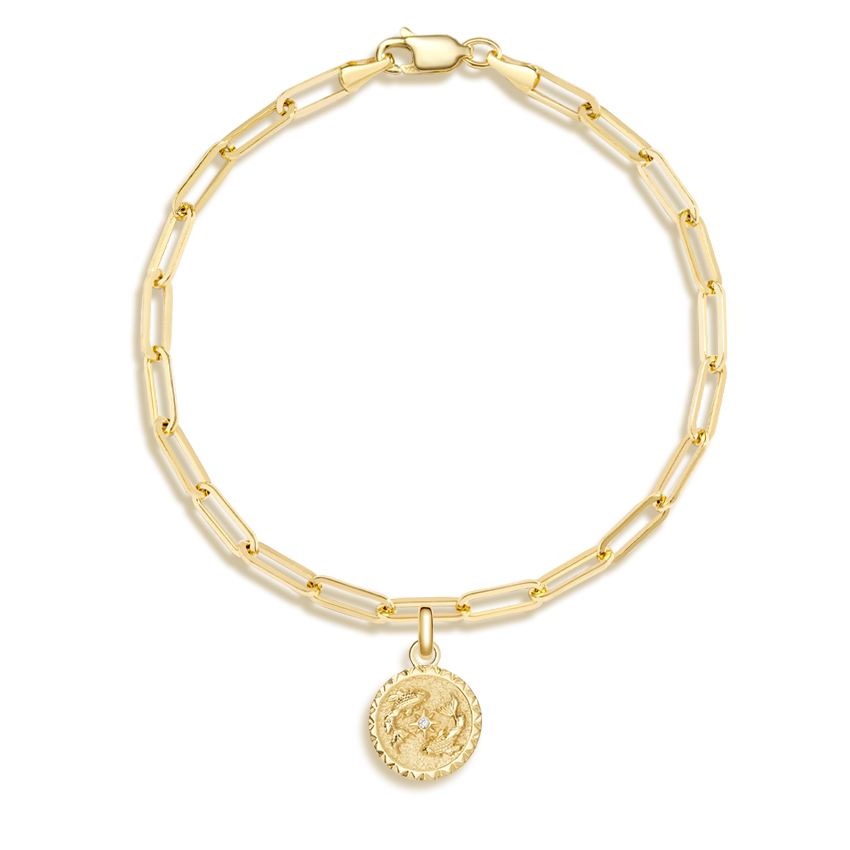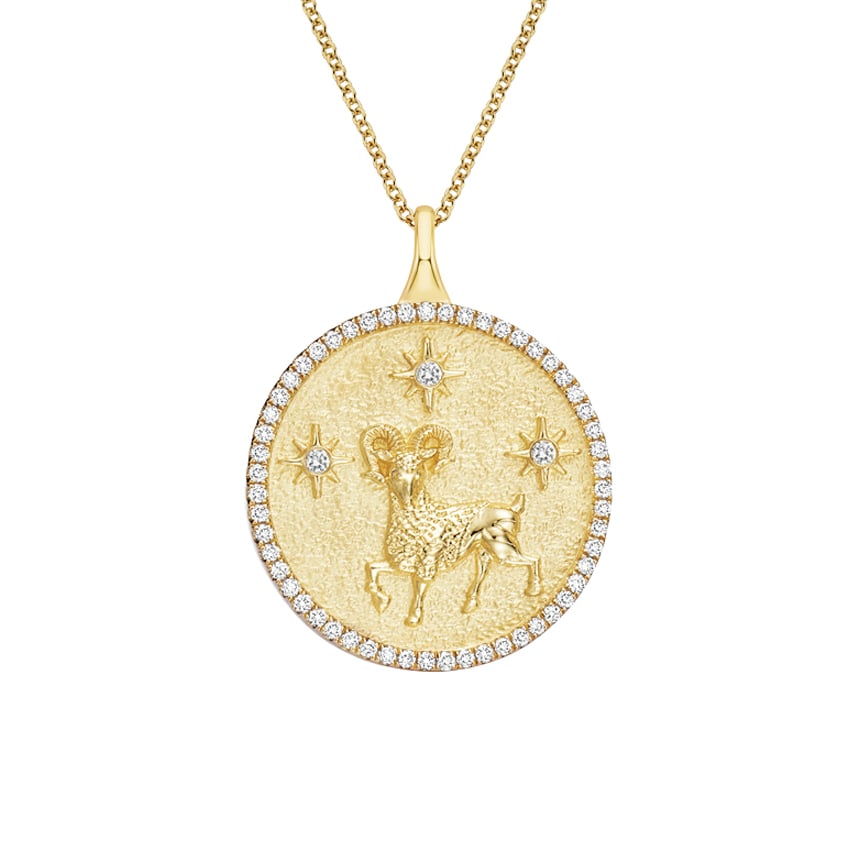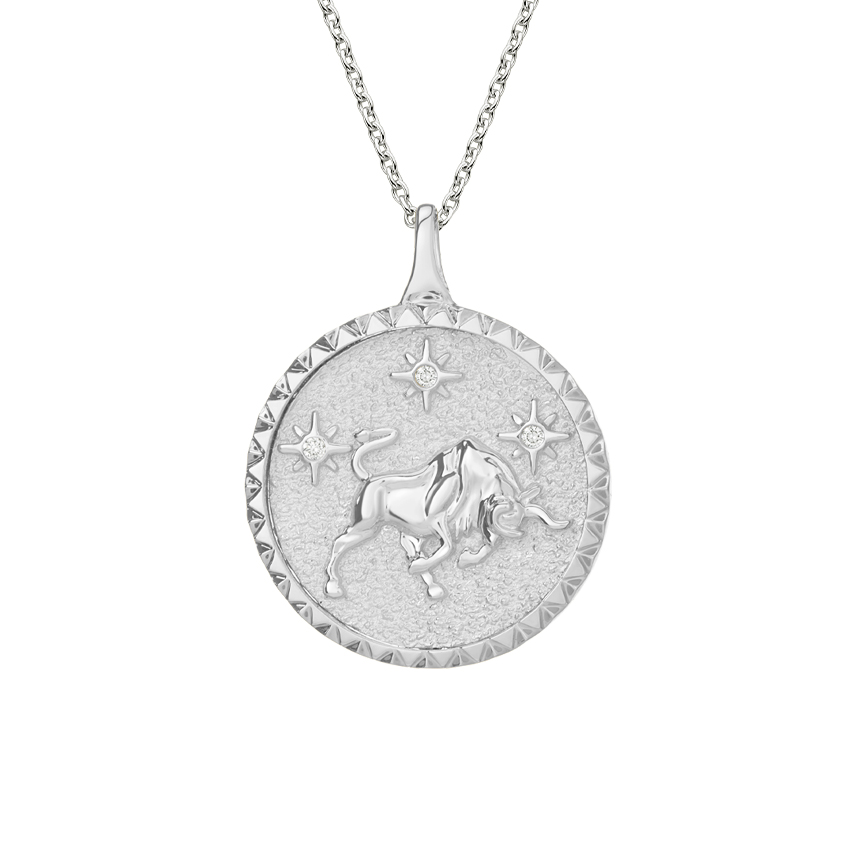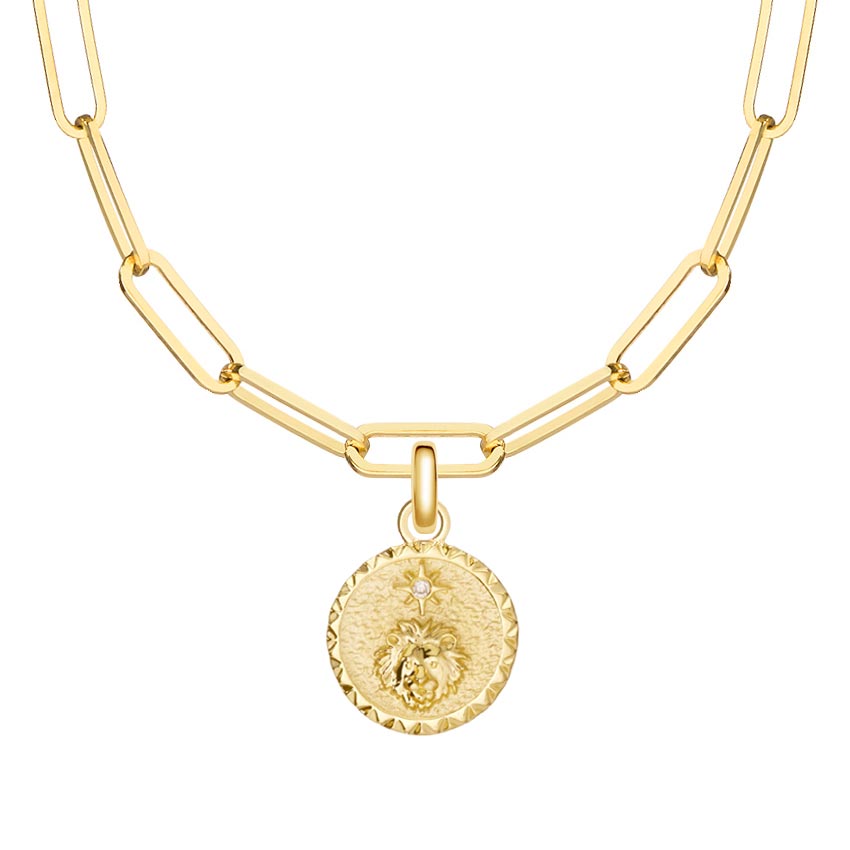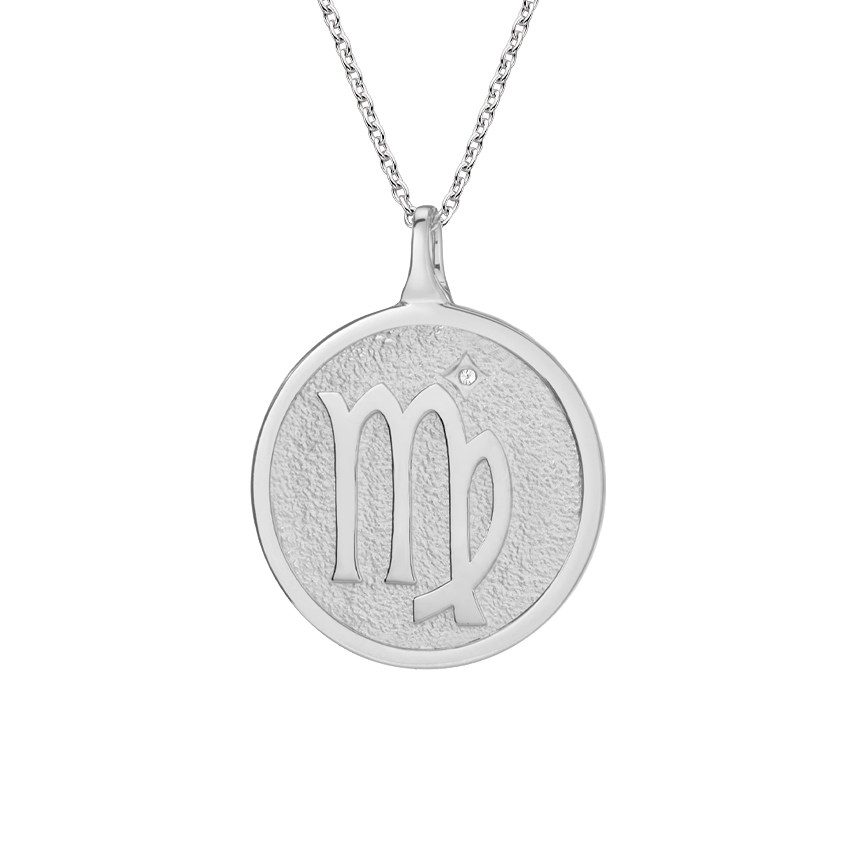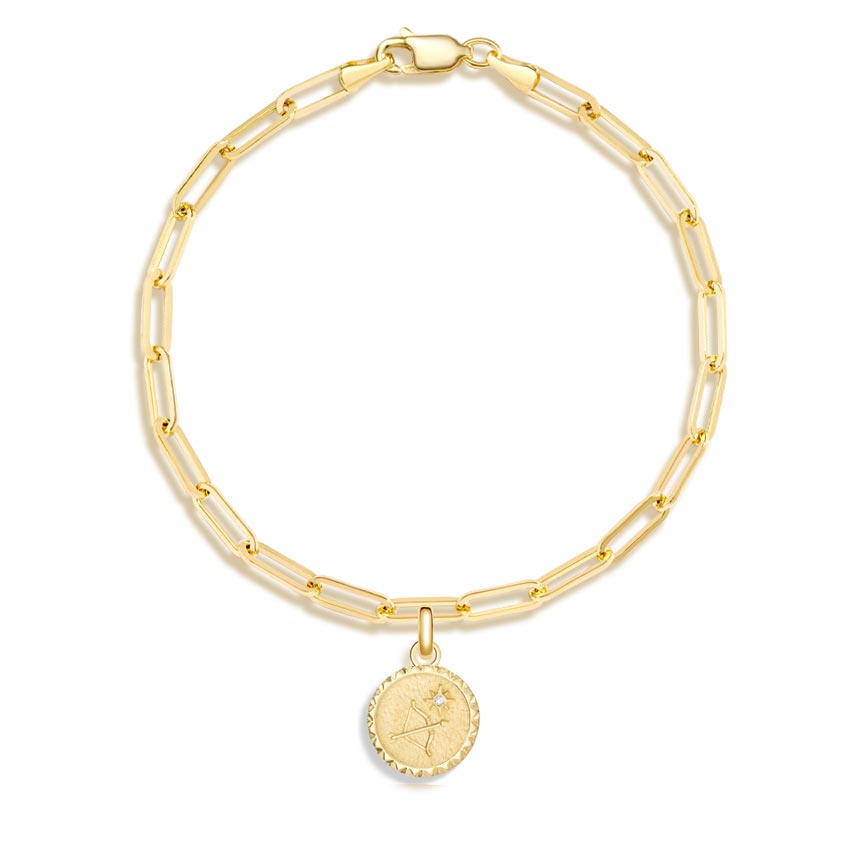
Sometimes we need a sign that a relationship is meant to be. In some cases, a star sign. The zodiac can be your wayfinder when you’re searching for your spouse. Read on to see your match made in (celestial) heaven.
What zodiac signs match well together?
Opposite zodiac signs are said to be soulmates because they bring each other balance. For example, a sensible Earth sign might crave the spontaneity of a more lighthearted Air sign, making life feel more fulfilling, while the Air sign idolizes their partner’s drive. Like a color wheel, the contrast is complementary.
Opposite zodiac relationships are proof that a couple doesn’t have to be like-minded to be in tune with one another, and they don’t always have to agree to make decisions together. In fact, a harmonious marriage can come from differences. Your other half can challenge you in exciting and necessary ways, or shine in areas where you’re less confident.
Here are the opposites on the zodiac wheel, said to bring wedded bliss:
- Libra – Aries
- Taurus – Scorpio
- Gemini – Sagittarius
- Cancer – Capricorn
- Leo – Aquarius
- Pisces – Virgo
All that being said, every relationship is unique. Star signs are a fun identity marker. Like a medallion necklace, they’re symbolic. The zodiac gives us a sense of certainty and guidance when we’re feeling lost. But you and your partner can shape your own identity (and fate), having found that reassurance in love.

Are certain zodiac signs more compatible than others?
When you want smooth sailing, star signs within the same element are said to be compatible. Because while relationships are complicated and take effort, they don’t have to feel like it. It’s easy for zodiac couples with the same element to bring out the “best” in each other because they share those qualities. Air and Fire are outgoing, lively types — together they’re dynamic and social and bring the fun. Earth and Water are more grounded (naturally), so they have an easygoing, communicative partnership.
Typically, zodiac pairs tend to be a mix or match of fire and air signs, or earth and water signs. These unions will lead to that straightforward love, rather than star-crossed lovers. It doesn’t mean difficulties won’t arise; it only implies that you’ll feel secure tackling your worries together because you and your partner share a similar outlook on life.
- Fire Signs: Aries, Leo, Sagittarius
- Air Signs: Gemini, Libra, Aquarius
- Earth Signs: Taurus, Virgo, Capricorn
- Water Signs: Cancer, Scorpio, Pisces
Zodiac Compatibility
Compatibility doesn’t mean the absence of conflict, it might just mean less of it or a simpler time overcoming it. And remember that your bond is bigger than a star chart. What’s important in a marriage is that you value your partner and your own growth; that you recognize what you both need and offer (the traits you both have from experience vs. when you were born). You should both understand how you like to spend time and respect how much of that time you each expect to spend together.
To find that “alignment,” these zodiac signs are said to be your power couples.
Aquarius (Water Bearer): January 20–February 18
Aries: Both spontaneous and open to new experiences, this zodiac pairing is the ideal marriage for those who aren’t faint of heart. They’ll indulge each other’s sense of adventure for years.
Sagittarius: Another sign that doesn’t want to give up their freedom and is always looking for what’s new and what’s next. Always exciting, never boring, together this couple will never have to “settle down.”
See our favorite Aquarius jewelry.
Pisces (Fish): February 19–March 20
Scorpio: Major PDA with this couple. The dreamy Pisces and intense Scorpio are destined for emotional depth and intricacy. These two signs are cosmically suited for each other, especially if that suit is a wedding tux.
Cancer: The charismatic Pisces can be guarded, but the open vulnerability of a Cancer makes emotional expression effortless.
Explore our Pisces jewelry.
Aries (Ram): March 21–April 19
Libra: An Aries is domineering and wants to take charge, and the diplomatic Libra is happy to let them do so. It works out: the Aries acts on intuition and impulse, making up for the Libra’s indecision. But because a Libra is careful and controlled, they can reign in the reckless Aries.
Gemini: Two signs you can’t tame. Endless energy and banter galore.
Shop our top fine jewelry picks for Aries.
Taurus (Bull): April 20–May 20
Cancer: A complete romantic, the sensitive, reliable Taurus adores the nurturing Cancer. It’s a natural fit for their devotion.
Virgo: Stubborn and loyal, Taurus also falls fast for the logical, analytical Virgo. With a shared love of planning and commitment, these two have stars in their eyes for each other.
Find fine jewelry gifts for the Taurus in your life.
Gemini (Twins): May 21–June 21
Aquarius: The genius Gemini is curious and creative, so a psychological match with these quirky, brilliant artists is befitting of their intellect.
Sagittarius: A Gemini’s duality means they’re afraid of commitment and always on the fence. But because of their mutual appreciation and respect for space, these couples benefit from that independence.
Shop our Gemini zodiac jewelry.
Cancer (Crab): June 22–July 22
Pisces: Cancers look for long-term lovers, so it makes sense that their would-be-weds are star signs known for being nostalgic and very in their feelings. A couple of water signs, the Cancers love the Pisces for their strong empathy.
Taurus: Intensely emotional, these two have a deep romantic connection. They blend seamlessly with one another’s dedication.
See our jewelry picks for Cancers.
Leo (Lion): July 23–August 22
Another Leo: A Leo needs to be admired and adored. To illuminate their radiance, recruit a fellow feline with a flair for the dramatic. These two shining stars make no apologies, and feed each other’s confidence and motivation. Learn all about our favorite jewelry for Leos.
Aries: This loose cannon isn’t afraid to go head to head with an attention-seeking Leo. As a sign that’s also all about fun, this free-spirited couple is unstoppable.
Virgo (Virgin): August 23–September 22
Another Virgo: When it’s right, it’s right. This sign prizes perfection and organized schedules, and they’re not super showy in their affection. Who better to honor all of those preferences than a fellow introvert?
Taurus: Steadfast patience. AND it’s reciprocated? This is a binding love that makes each other feel whole.
See our recommendations for the perfect jewelry for Virgos.
Libra (Balance): September 23–October 23
Aries: The laid-back Libra is a social butterfly, but also brings much needed order to the life of a “ram”-bunctious Aries. While Aries is the aggressive provocateur when it comes to conflict, the Libra’s honest, measured approach to problem solving achieves a calm resolution.
Gemini: Two signs intoxicated by deep conversation, this is a psychologically stimulating partnership full of witty repartee.
Check out our top jewelry picks for Libras.
Scorpius (Scorpion): October 24–November 21
Taurus: This is that meant-to-be love. Scorpios are skittish about relationships, while Taurus signs feel their emotions all the way down. They provide the solid, supportive foundation a Scorpio needs to trustfall in love.
Capricorn: They won’t shy away from a Scorpio’s intensity. They’ll pry it open.
Discover the meaning behind Scorpio jewelry.
Sagittarius (Archer): November 22–December 21
Gemini: Both fairly philosophical and hilarious, the vivacious Gemini shares this star sign’s wit and wild ways. Nuptials are never a miss.
Aries: Both star signs believe there’s a first time for everything. The bold Aries is a strong match for the life-loving Sagittarius.
Capricornus (Goat): December 22–January 19
Cancer: The ambitious Capricorn craves security, and the predictable Cancer answers the call.
Virgo: A couple of ornery loners with a mutual love of structure. Both are disciplined and hardworking; calm and collected; thoughtful and detail-oriented. Talk about couple “goals.”
What zodiac signs should marry each other?
Astrology suggests you should marry your zodiac opposite or a star sign that shares the same element. But ultimately, for your love to endure, your partner should improve your life and bring joy to it; they should understand what triggers you and what you need from them when you’re stressed.
It’s romantic to believe that our love was written in the stars. And sure, certain qualities may be more compatible than others. In the end, marry who you want to regardless of your partner’s zodiac sign.
Attract the right energy and love connection by wearing your star sign (and heart) on your sleeve. See What Jewelry to Wear According to Your Star Sign or shop our medallion necklaces and charms.
Still interested in learning more about zodiac jewelry? Check out our other zodiac guides: Aquarius, Pisces, Aries, Taurus, Gemini, Cancer, Leo, Virgo, Libra, Scorpio, Sagittarius, and Capricorn


